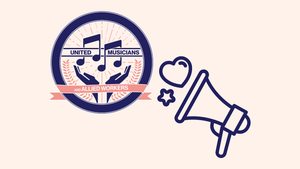New York City Council has thrown its weight behind proposed federal legislation in the US that would add a 50% levy to streaming service subscriptions, with the additional revenue flowing direct to artists and session musicians rather than through record labels and music distributors. It’s a proposal that could see musicians better off to the tune of $40,000 or more each year.
The Living Wage For Musicians Act, proposed in US Congress last year, would introduce the levy US-wide through federal law, with councillors in New York saying any moves to boost artist payouts from streaming are particularly important for the city because of the large community of musicians who live and work there.
NYC council member Shahana Hanif, who proposed a resolution formally endorsing the LWMA, says that the act “would raise streaming payouts and ensure fair pay for artists who power our playlists. Passing the act at the federal level is key to making NYC more affordable for working musicians - to live, create and thrive in the music capital of the world”.
The resolution passed by the New York City Council this week notes how music streaming has become a multi-billion dollar business in the last decade, but many artists and musicians continue to struggle.
There are “over 14,000 working musicians living in New York City”, the resolution adds, and they together “contribute substantially to the city’s cultural landscape and economy”. But “many musicians in New York City face volatile employment situations and economic insecurity”.
Which is why the councillors believe federal law-makers in Washington should pass the LWMA. However, streaming services and major labels - already fighting Canada’s much more modest 5% streaming levy - will likely mobilise against what amounts to the most aggressive streaming pricing intervention proposed globally, should the proposals progress in Congress.
The LWMA was proposed in Congress by former New York representative Jamaal Bowman and Detroit’s Rashida Tlaib, who is still a member of the House Of Representatives. Their proposals are basically a cross between a streaming levy system, like those introduced in France and Canada, and a performer equitable remuneration system, which applies to streaming in countries like Spain.
Artists currently earn from streaming via the record labels or music distributors they work with. The streaming services have revenue share deals with the labels and distributors, and the music companies then share the money they receive with artists according to the terms of their individual record or distribution contracts.
Session musicians and backing vocalists don’t generally earn anything from streaming, being paid a one off fee for their time when a recording is made.
If the LWMA is passed, streaming services would apply an additional charge on every subscriber’s monthly payment, set at 50% of whatever each subscriber currently pays.
This means that a standard Spotify Premium subscription - currently $11.99 a month in the US - would become $17.99 a month, while a family plan would go from $19.99 to $29.99. All of that additional revenue would be passed to a fund that pays artists and musicians directly, with 90% flowing to the main artists on each track and 10% to session musicians.
With over 100 million paid streaming subscribers across the US population of 340 million people, a 50% levy could generate an additional $7.2 billion annually for musicians. The most recent Bureau Of Labor And Statistics numbers show 169,300 musicians and singers working in the US, meaning a streaming levy at the scale proposed would pay an average of $42,500 a year to each and every one of them.
Obviously, the number of musicians actively involved in recordings may be significantly different - and the splits between featured artists and session musicians would also alter those payouts. Nonetheless, the numbers represent a potentially huge change to the economics of being a musician.
That income would be in addition to anything the artists already receive from their label or distributor. That makes it similar to the ER system in Spain, where a portion of streaming revenue - though just a few percent - flows directly to performers. However, unlike in Spain, those direct performer payments would not impact on the money paid to labels and distributors.
The big down side, of course, is that everyone’s subscription fees would go up by 50%. That is something critics of the plan - which, as noted, will likely include the streaming services and major record companies - will very much hone in on, expressing concerns that such a significant price hike would result in many people cancelling their subscriptions, meaning everyone loses out.
However, supporters of the proposals argue that artists and musicians would ultimately be better off. The resolution passed by NYC Council says the LWMA would “compensate artists and musicians more fairly” and “generate more sustainable income for a broader and more diverse set of artists”. Which is why the council “calls on Congress to pass, and the President to sign, the Living Wage For Musicians Act”.
Within the music community, the United Musicians And Allied Workers is the biggest supporter of the LWMA. It thanked Hanif and New York City Council for passing the resolution this week, presumably hoping that the momentum started in New York can now be transferred to Washington, in the bid to rally more support for the proposals in Congress.
While NYC’s endorsement provides symbolic support for the proposal, the LWMA faces an uphill battle in a divided Congress, and a political climate informed by the interests of powerful tech companies. It’s likely that the streaming industry’s lobbying power, alongside consumer price sensitivity concerns, will dominate any debate.
For artists and musicians, the LWMA represents the most ambitious attempt yet to restructure streaming payments. For the industry, it’s a forceful reminder that political pressure for fair artist compensation is unlikely to go away - even if this particular 50% solution may prove too radical for mainstream adoption.

